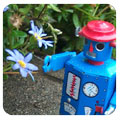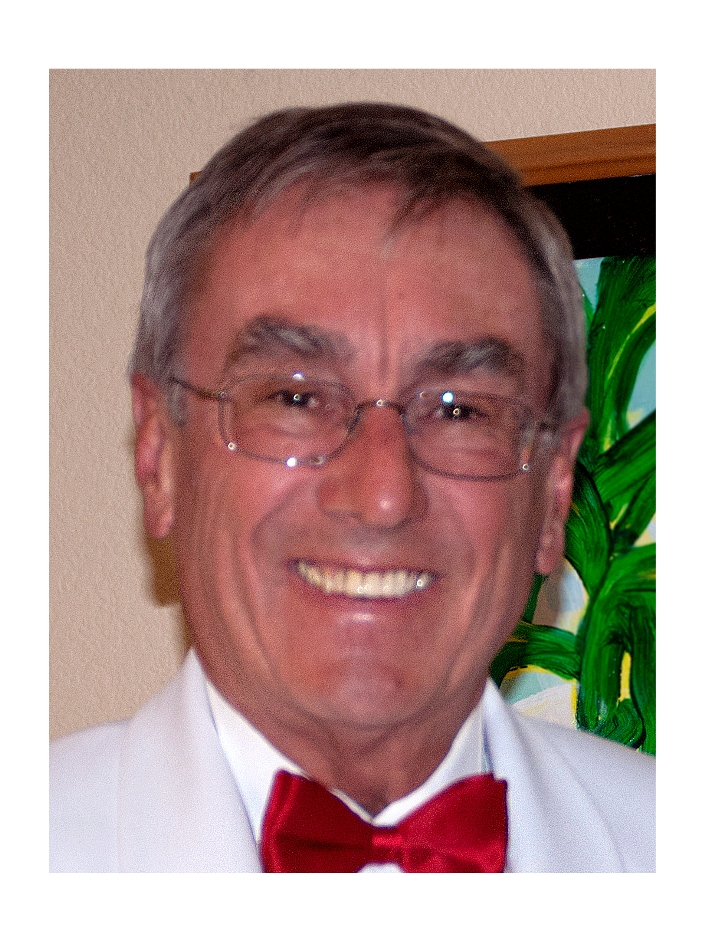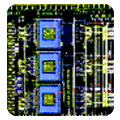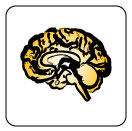 |
Biographical Sketch
Caltech Research
Curriculum Vitae (pdf)
Consulting
Captain Rod (pdf)
The Band(pdf)
Contact
www.rodgoodman.com

home |
 |
 |
 |
Rod Goodman B.Sc., Ph.D.,
C.Eng., FIET, FIEEE.
Caltech Research
My research at Caltech was generally in the area of intelligent
information processing systems. The goal was to design autonomous
adaptive systems that learn and exhibit intelligent decision-making
behavior, the emphasis being on systems. Only in a complete
system do all the pieces come together: hardware, software, algorithms,
and architecture. Each must work in perfect unison to obtain intelligent
systems level behavior. The systems that I worked on at Caltech are in the
areas of Robotics and Automation , Neuromorphic
VLSI Processing , Information Processing
Systems , and Cognitive Systems .
 My
work in Robotics at Caltech focused on
Collective Robotics and Swarm Intelligence . Here we take inspiration from biology
in the way that simple low level sub-system units (such as ants)
can lead to complex systems level behavior (such as the functioning
of a complete nest). We ask the question: how can we apply
these principles to engineering systems? In particular, how do we
design low-level behaviors for simple small robots that interact
with each other and the environment to produce complex systems level
behavior? The results of this work are not
only applicable to robotics. For example, we have applied these
principles to routing in communications networks, and to the control
of automotive traffic and satellites. At Caltech, in collaboration with Alcherio Martinoli (EPFL),
Owen Holland (Sussex University),
and Alan Winfield (University of the West of England),
I built up a research group that focused on autonomous collective
robotics. In addition to setting up a robot laboratory with a large
number of robots, in 2000 we developed and taught the first ever course
on
Swarm Intelligence.
My
work in Robotics at Caltech focused on
Collective Robotics and Swarm Intelligence . Here we take inspiration from biology
in the way that simple low level sub-system units (such as ants)
can lead to complex systems level behavior (such as the functioning
of a complete nest). We ask the question: how can we apply
these principles to engineering systems? In particular, how do we
design low-level behaviors for simple small robots that interact
with each other and the environment to produce complex systems level
behavior? The results of this work are not
only applicable to robotics. For example, we have applied these
principles to routing in communications networks, and to the control
of automotive traffic and satellites. At Caltech, in collaboration with Alcherio Martinoli (EPFL),
Owen Holland (Sussex University),
and Alan Winfield (University of the West of England),
I built up a research group that focused on autonomous collective
robotics. In addition to setting up a robot laboratory with a large
number of robots, in 2000 we developed and taught the first ever course
on
Swarm Intelligence.
 My second “biologically inspired” area of interest at Caltech was
that of Neuromorphic VLSI Processing.
These are sub-systems that emulate the neural processing
that takes place in biological systems, such as those that give
us our senses of vision, sound and speech, touch, and chemical sensing.
The performance of these biological systems is truly impressive
and motivated our research into the application of these principles to engineering
systems for sensing and actuation. The Neuromorphic approach
was pioneered by Carver Mead
and John Hopfield at Caltech and led to the
formation of the
Computation and Neural Systems (CNS) degree program, and subsequently the Caltech NSF
Center for Neuromorphic Systems Engineering (CNSE), in which I served as founding Director.
Within CNS my group developed
the
Caltech Electronic Nose ,
and the Caltech Silicon Active Skin –
a project that combined sensing, processing, and actuation on an
integrated CMOS/MEMS system chip. In addition, my Neuromorphic VLSI Processing
group researched and demonstrated VLSI systems for on-chip
Neural Network Learning,
high capacity
Neural Associative Memories
which can perform real-time vector quantization on images, as well as
chips for
Video Contrast Enhancement,
Color Constancy , and
Stereopsis .
My second “biologically inspired” area of interest at Caltech was
that of Neuromorphic VLSI Processing.
These are sub-systems that emulate the neural processing
that takes place in biological systems, such as those that give
us our senses of vision, sound and speech, touch, and chemical sensing.
The performance of these biological systems is truly impressive
and motivated our research into the application of these principles to engineering
systems for sensing and actuation. The Neuromorphic approach
was pioneered by Carver Mead
and John Hopfield at Caltech and led to the
formation of the
Computation and Neural Systems (CNS) degree program, and subsequently the Caltech NSF
Center for Neuromorphic Systems Engineering (CNSE), in which I served as founding Director.
Within CNS my group developed
the
Caltech Electronic Nose ,
and the Caltech Silicon Active Skin –
a project that combined sensing, processing, and actuation on an
integrated CMOS/MEMS system chip. In addition, my Neuromorphic VLSI Processing
group researched and demonstrated VLSI systems for on-chip
Neural Network Learning,
high capacity
Neural Associative Memories
which can perform real-time vector quantization on images, as well as
chips for
Video Contrast Enhancement,
Color Constancy , and
Stereopsis .
 My
third research area at Caltech was in the area of Information
Processing Systems . This work is more “algorithmically
based” and built on my past work in Neural Networks, Machine
Learning, and Information Theory and Coding. It focused on building
system applications such as:
Texture Recognition,
Object Recognition,
Handwritten Document Analysis,
Cursive Keyword Spotting, and
Smart Web Searching.
In particular,
my information processing research has resulted in an information
theoretic approach to modeling decision systems which extends from
the automated capture of knowledge in the form of
Rules,
to the
implementation of Bayesian probabilistic inference systems on multi-layered
parallel
Neural Networks.
Thus, the machine learns
automatically from experience, executes its knowledge in true real-time
and its decisions are understandable to humans because the knowledge
is in the form of human-readable “rules”. This approach
was also applied to modeling and controlling
Telephone Traffic,
building neural networks that can discover
State Machines and Grammars, and networks that
can analyze music and then create new music:
The ADMIRE System. Neural network algorithms for
control applications were also investigated.
Neural networks are capable of learning complex non-linear dynamics,
which are difficult to model mathematically. In particular, we
developed neuro controllers that combine linear and
non-linear control theory,
Fuzzy Rules,
and Case Based Reasoning, to produce more robust controllers than are achievable
with one technique alone. My
third research area at Caltech was in the area of Information
Processing Systems . This work is more “algorithmically
based” and built on my past work in Neural Networks, Machine
Learning, and Information Theory and Coding. It focused on building
system applications such as:
Texture Recognition,
Object Recognition,
Handwritten Document Analysis,
Cursive Keyword Spotting, and
Smart Web Searching.
In particular,
my information processing research has resulted in an information
theoretic approach to modeling decision systems which extends from
the automated capture of knowledge in the form of
Rules,
to the
implementation of Bayesian probabilistic inference systems on multi-layered
parallel
Neural Networks.
Thus, the machine learns
automatically from experience, executes its knowledge in true real-time
and its decisions are understandable to humans because the knowledge
is in the form of human-readable “rules”. This approach
was also applied to modeling and controlling
Telephone Traffic,
building neural networks that can discover
State Machines and Grammars, and networks that
can analyze music and then create new music:
The ADMIRE System. Neural network algorithms for
control applications were also investigated.
Neural networks are capable of learning complex non-linear dynamics,
which are difficult to model mathematically. In particular, we
developed neuro controllers that combine linear and
non-linear control theory,
Fuzzy Rules,
and Case Based Reasoning, to produce more robust controllers than are achievable
with one technique alone.
 My
fourth research area at Caltech was that of Cognitive Systems and
Machine Consciousness.
I am interested in discovering the “reason”
for consciousness in higher mammals, and why biology has evolved
this system for the control of complex organisms. The goal
is to then use these principles as the guiding architecture for
Adaptive Learning Robot Controllers.
In 2001
Christof Koch, David Chalmers,
Owen Holland , and I organized the first
ever conference on Machine Consciousness which brought together Biologists, Engineers, Ethicists, and Philosophers
at the Banbury Center of Cold Spring Harbor Laboratory, to discuss
Can a Machine be Conscious? My
fourth research area at Caltech was that of Cognitive Systems and
Machine Consciousness.
I am interested in discovering the “reason”
for consciousness in higher mammals, and why biology has evolved
this system for the control of complex organisms. The goal
is to then use these principles as the guiding architecture for
Adaptive Learning Robot Controllers.
In 2001
Christof Koch, David Chalmers,
Owen Holland , and I organized the first
ever conference on Machine Consciousness which brought together Biologists, Engineers, Ethicists, and Philosophers
at the Banbury Center of Cold Spring Harbor Laboratory, to discuss
Can a Machine be Conscious?
top |
 |









